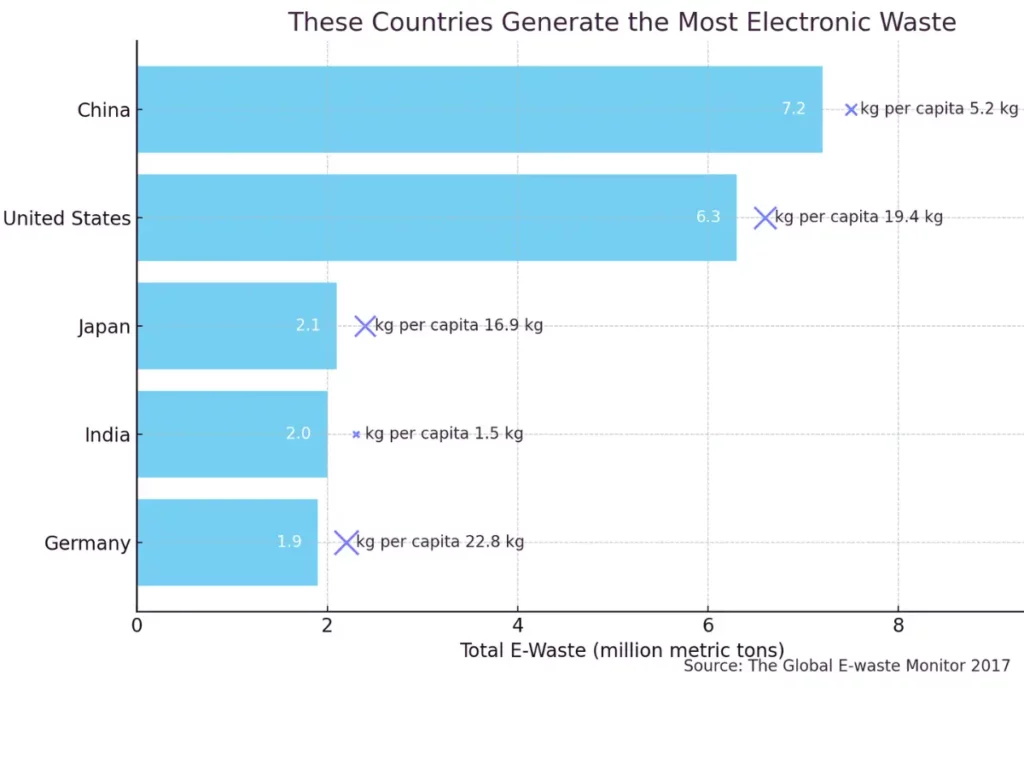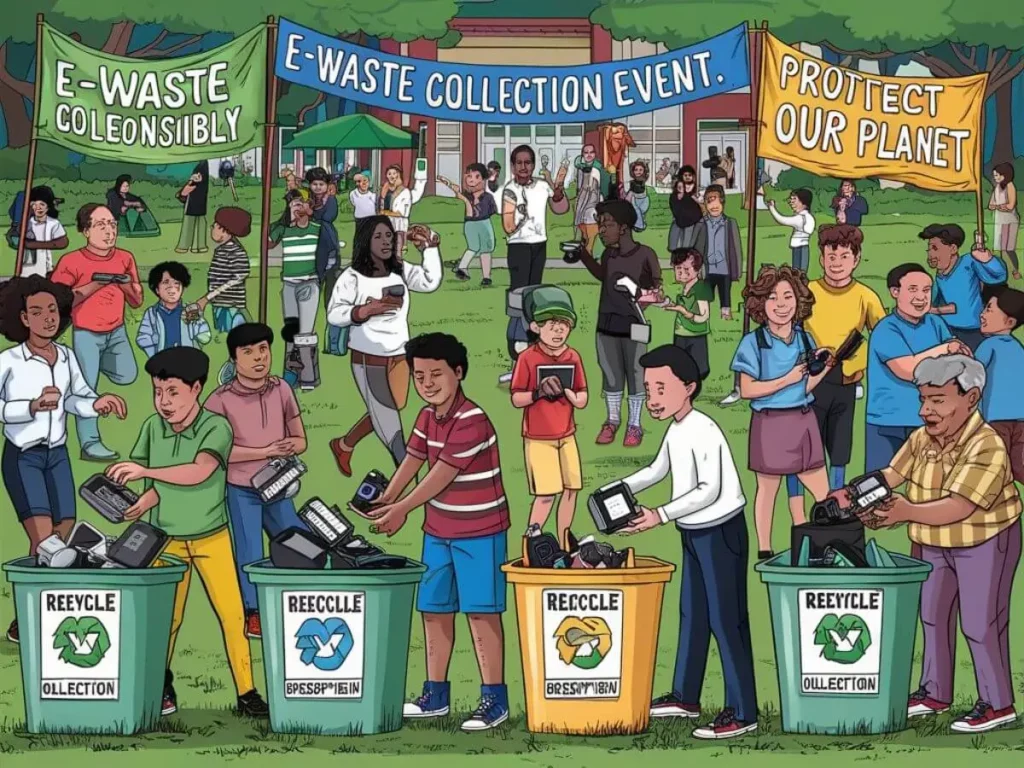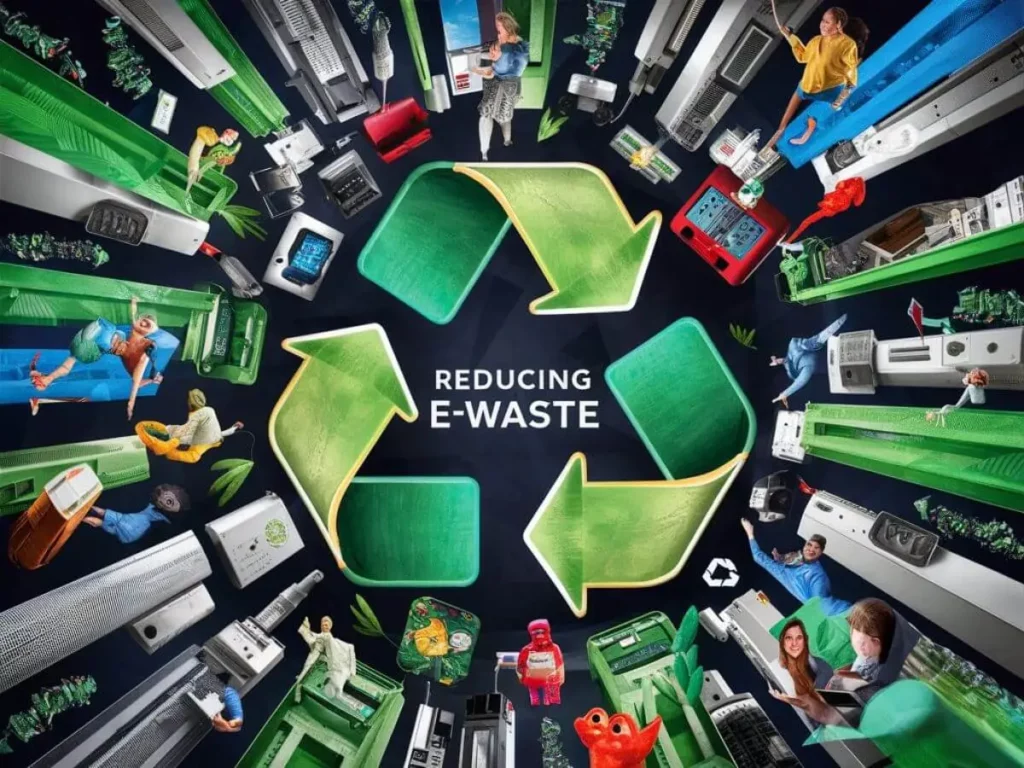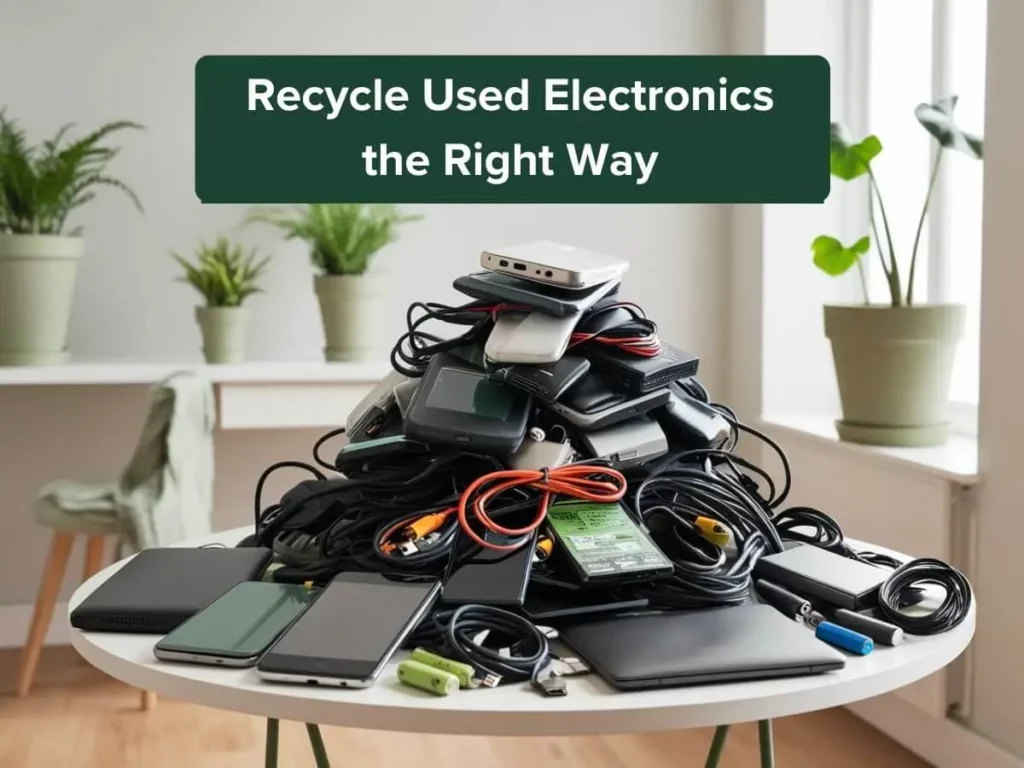(Disclaimer:This post may contain affiliate links which means I may receive a commission for purchases made through links. I will only recommend products that I genuinely believe in) Learn more.
Electronics are a big part of our daily lives. As tech evolves, our gadgets get outdated fast which means more electronic trash (e-waste).
If we don’t handle it right, e-waste can harm the planet and our health.The good news is, there are eco-friendly ways to get rid of your electronics.
Living in New Jersey, I’ve had firsthand experience with disposing of e-waste responsibly. I recently had to dispose of an old laptop and some peripherals that had been collecting dust in my closet.

Knowing the potential harm they could cause if improperly discarded, I decided to find a responsible recycling option.
First, I wiped all personal data from the laptop using a factory reset option. I then removed the battery to dispose of it separately.
I found a local e-waste recycling center certified by e-Stewards. Their website provided clear instructions on what items they accept and how to prepare them. I dropped off my electronics at their facility, feeling assured that they would be handled responsibly.
How E-Waste Affects Us
E-waste is a growing problem. For example, the United States Environmental Protection Agency (EPA) says, the USA generate millions of tons of E-waste, but only about 25% gets recycled.
The rest ends up in landfills where toxic substances like lead, mercury and cadmium can leach into the soil and water and harm the environment.
These poisons can cause serious health problems including damage to the nervous system and breathing issues.
To reduce these risks and protect the environment and public health we need to dispose of E-waste properly.
Also manufacturing new electronics requires a lot of resources. When we recycle our old devices we consume fewer resources and less harm to the environment.

Types of Electronic Waste
Electronic waste includes many items. You’ll see things like:
- Smartphones and tablets
- Laptops and desktop computers
- TVs and monitors
- Home appliances (microwaves, fridges)
- Batteries and chargers
These products have hazardous parts inside. To get rid of them , you need to treat them specially.
Legislation and Regulations in the US
US federal and state laws govern e-waste disposal. The Resource Conservation and Recovery Act (RCRA) applies to hazardous waste disposal at the federal level including some electronic components.
Many states have additional rules. California for example has strict e-waste recycling laws that require consumers to recycle electronics through approved programs.
To see your state’s specific rules check the Environmental Protection Agency (EPA) website.
Getting Your Electronics Ready for Disposal
When we throw away our old electronics we should do it in a way that’s good for the earth. If we choose eco-friendly options we can reduce the harm from electronic waste, or “e-waste.”
This allows valuable materials to be recycled or reused. Before we get rid of any electronic device we need to prepare it first:
- Back-Up Your Data: Make sure you’ve saved important files and data to an external hard drive or cloud storage.
- Wipe Personal Information: Use software to delete all personal data from the device.
- Remove Batteries: You have to dispose of batteries because of their hazardous parts.
Now, here are six eco-friendly ways you can get rid of your used electronics
1. Certified E-Waste Recycling Centers
A good way to get rid of electronics is to take them to an approved e-waste recycling facility.
These facilities follow strict rules to ensure e-waste is handled responsibly. You can find a list of certified e-waste recyclers on the EPA website.
2. Manufacturer Take-Back Programs
Many electronics makers have programs to take back and recycle their products. Big brands like Apple, Dell and Samsung have robust recycling programs.
These programs allow you to send your old gadgets back to the maker for free and they’ll recycle them .
Manufacturer Programs:
- Apple Recycling Program: Apple recycles any Apple device and gives trade-in credits for newer models. Learn more.
- Dell Reconnect Program: Dell partners with Goodwill to take any brand of computer equipment for free recycling. Find a location.
3. Donations to Charitable Organizations
If your electronics still work consider donating. Many charities and schools take used electronics and use them again for education or community purposes. Groups like Goodwill and The Salvation Army accept computers, phones and other electronics. Donation Resources:
- Goodwill: Accepts different types of electronics and makes it easy to drop them off.
- The Salvation Army: Accepts working electronics and home appliances.
4. Community Collection Events
Many U.S. towns hold e-waste collection events where you can drop off your old electronics for free. Local governments or green groups sponsor these events. Check your city’s website or local news to find out about upcoming e-waste collection events. Finding Events:
- Earth911: Has a database you can search to find recycling events and locations. Search here.
- Local Government Websites: show upcoming recycling events and services.
5. Retailer Recycling Programs
Some big retailers have programs to recycle electronics. Places like Best Buy and Staples have services where you can bring various electronic devices. Retailer Programs:
- Best Buy: Takes most electronics such as TVs, computers and cell phones, no matter where you bought them. Learn more.
- Staples: Allows customers to recycle office electronics and small appliances for free. Learn more.
6. Mail-Back Recycling Programs
For smaller electronics you might find mail-back programs useful. These programs allow you to send your old devices to a recycling center through the mail. Companies like TerraCycle and EcoATM offer simple mail-back services.
Mail-Back Services:
- TerraCycle: Recycles waste that’s hard to recycle, including electronics. Learn more.
- EcoATM: Has kiosks where you can drop off old phones for cash or mail-in option. Learn more.
In summary
Getting rid of electronics the right way is crucial in reducing e-waste and taking care of the environment.
When you back up your data, wipe personal info, remove batteries and use certified e-waste recycling centers, manufacturer programs, local events, store services and mail-back options you ensure your old devices are recycled green.
These small steps can help the planet. To learn more about e-waste and recycling options, check out the EPA’s electronics donation and recycling page.



